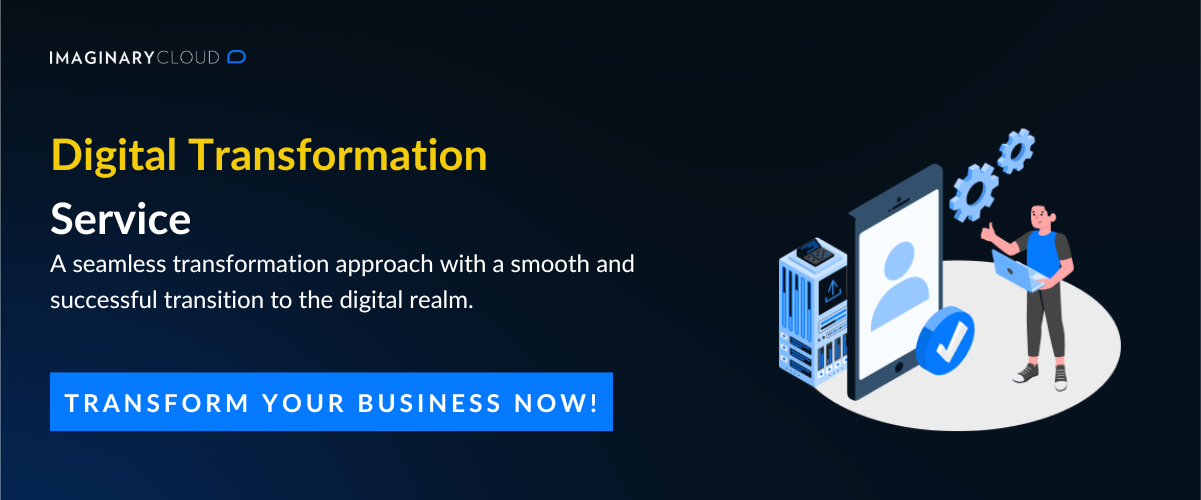Welcome to the world of digital acceleration, where innovation and transformation converge. This guide explores how digital acceleration reshapes industries, business implications, and essential strategies for navigating this dynamic landscape.
Whether you're a large enterprise or a small business, join us on this amazing journey through the ever-changing world of digital acceleration.
Table of Contents
What is Digital Acceleration?
The Impact of Digital Acceleration on Businesses
Why is Digital Acceleration Important?
How to Plan for Digital Acceleration
Who Uses Digital Acceleration?
How Can You Accelerate Your Digital Growth?
Tech Trends Powering Digital Acceleration
Challenges in the Digital Journey
Final Thoughts
What is Digital Acceleration?
Digital acceleration is the strategic and rapid adoption of digital technologies to transform and enhance business operations, customer experiences, and overall organisational performance. In a world of constant technological advancements, understanding and implementing digital acceleration is not just a competitive advantage—it's a necessity.
But isn't digital acceleration and digital transformation the same thing? Digital acceleration rapidly adopts digital technologies for immediate enhancements in business. It's tactical, quickly integrating digital tools for short-term benefits. On the other hand, digital transformation is a broader, long-term strategy involving a comprehensive overhaul of organisational processes, culture, and technology. It's a strategic, profound reshaping of an organisation's operations for sustained digital competitiveness.
Digital acceleration is a force reshaping industries globally but is not limited to tech giants. Small and medium-sized enterprises (SMEs) increasingly recognise the need for digital acceleration. A report by Sage suggests that 8 in 10 SMEs believe digital tools are essential for their growth.
The Impact of Digital Acceleration on Businesses
Digital acceleration is a game-changer for businesses, transforming how they operate, compete, and provide value. Let's look at how this revolutionary process affects several parts of business operations.
2.1 Streamlining Operations: A New Level of Efficiency
One of the key benefits of digital acceleration is increased efficiency in company processes. According to a Couchbase survey, 60% of businesses said digital transformation initiatives significantly increased operational efficiency.
Businesses may optimise operations, cut costs, and increase productivity by implementing automated workflows and real-time data analytics. For example, logistics companies that use IoT sensors and AI algorithms can improve route planning, resulting in fuel savings and speedier deliveries.
2.2 Improved Customer Experience: Meeting and Exceeding Expectations
Digital acceleration is a catalyst for improving customer experiences. Businesses that use digital technologies to understand customers' demands, personalise interactions, and deliver seamless omnichannel experiences gain a competitive advantage. For example, e-commerce systems that use AI-driven recommendations have greater user engagement and conversion rates.
2.3 Agile Decision-Making: Handling Rapid Change
The ability to make agile and data-driven decisions is a hallmark of businesses undergoing digital acceleration. According to McKinsey research, organisations that use data-driven insights are 23 times more likely to gain customers, six times more likely to retain customers, and 19 times more likely to be profitable.
This agility is evident in industries such as retail, where data analytics and AI enable real-time inventory management, allowing businesses to react quickly to market trends and customer needs.
2.4 Economic Growth and Market Expansion
Digital acceleration contributes to economic growth by creating new markets and revenue streams. According to a World Economic Forum report, digital transformation could add $100 trillion to the global economy by 2025.
This impact is visible in areas such as fintech, where digital payment solutions and blockchain technology are increasing financial inclusion and extending the total market by reaching out to the unbanked population.
Why is Digital Acceleration Important?
Digital acceleration is more than just a trend. It is a strategic need for businesses looking to thrive in a fast-changing digital market. Let's look at several reasons this change is critical for long-term success.
3.1 The Unprecedented Rate of Change: A Necessity, Not An Option
Technology is advancing at an unprecedented rate, and organisations that fail to stay up risk becoming outdated. According to Gartner, 60% of boards feel they have met their digital business optimisation goals, while 19% have made progress towards digital transformation.
In industries like retail, where consumer behaviour changes quickly, digital tools and methods are beneficial and essential for survival.
3.2 Addressing Changing Customer Expectations: A Customer-Centric Approach
Customer expectations constantly change, and businesses must adapt to satisfy these new demands. According to Salesforce research, 80% of customers now value their experience with a company more than its products or services.
To meet these expectations, industries like hospitality are going through significant adjustments. Digital check-ins, personalised recommendations, and contactless services are necessary for delivering a consistent client experience.
3.3 The Competitive Edge: Staying Ahead of the Digital Race
The digital world is highly competitive, and organisations that use digital acceleration gain a significant edge. McKinsey found that organisations that embrace digital transformation are 1.5 times more likely to be industry leaders.
Adopting Industry 4.0 methods, such as IoT and smart manufacturing, is essential for operational efficiency and gaining a competitive advantage in a global market.
3.4 Resilience in the Face of Disruptions: Navigating Uncertainty
The COVID-19 pandemic demonstrated the value of digital resilience during times of catastrophe. Companies with strong digital skills can quickly pivot to remote work and modify their business models.
The epidemic prompted an immediate shift to digital learning platforms for education businesses, demonstrating digital acceleration's resilience in dealing with uncertainty.

How to Plan for Digital Acceleration
Planning is the foundation for successful digital acceleration. Whether you're a corporation attempting to improve your operations or an individual seeking personal growth, a well-thought-out plan is essential for navigating the difficulties of digital transformation. Let's take a look at the key steps in digital acceleration planning.
Conducting a Digital Readiness Assessment: Before jumping into digital acceleration, you must examine your company's digital readiness. This includes assessing current technology infrastructure, identifying skill gaps, and assessing employee readiness for digital change.
Setting Clear Goals and Objectives: Digital acceleration objectives should be clear and measurable. Whether the goal is to improve customer experiences, operational efficiency, or market share, a well-defined roadmap ensures that you direct efforts and optimise resources.
Build a Flexible Roadmap: The digital landscape is dynamic, and adaptability is essential for successful digital acceleration. A flexible roadmap enables businesses and people to react to unexpected obstacles and embrace new opportunities. It is about developing a dynamic plan that adapts to the rapidly evolving digital environment.
Promoting Cross-functional Collaboration: Digital acceleration has several elements, and communication between diverse activities is crucial. This partnership guarantees that multiple departments work together to achieve common digital goals. It's more than simply an IT initiative; it's a collaborative effort involving marketing, finance, human resources, and other critical functions.
Data-Driven Decision-Making: In the digital age, data is a valuable asset. Effective digital acceleration necessitates data-driven decision-making. Data-driven insights inform strategic decisions about customer preferences, market trends, and operational performance.
Continuous Evaluation and Adaptation: The journey towards digital acceleration is ongoing and requires constant evaluation. Continuous assessment involves collecting feedback, analysing performance data, and adapting strategies to the changing digital context. It is a cyclical process that ensures continued growth and relevance.
Who Uses Digital Acceleration?
Digital acceleration is embraced across diverse sectors, catering to the needs of both large enterprises and smaller players.
- Large Enterprises: Major corporations lead the charge, recognising digital acceleration as critical for competitiveness and value creation.
- Small and Medium-Sized Enterprises (SMEs): SMEs increasingly acknowledge the importance of digital acceleration for recovery and growth.
How Can You Accelerate Your Digital Growth?
For companies navigating the digital landscape, accelerating growth requires strategic planning and a commitment to embracing transformative technologies. Let's look at essential strategies designed for companies looking to thrive in the age of digital acceleration.
Embrace a Customer-Centric Approach
Customers' expectations are changing, and companies prioritising customer-centricity gain a competitive advantage. Understanding consumer demands through data analytics, personalising interactions, and creating seamless omnichannel experiences are all critical components of a customer-centric strategy.
Invest in Employee Training and Development
Digital transformation needs a skilled workforce. Investing in employee training and development programs ensures the workforce has the digital skills required for effective transformation.
Promote Cross-functional Collaboration
Digital acceleration requires collaboration across diverse functions inside a business. Encourage communication and collaboration between departments to break down silos and provide a consistent approach to digital efforts.
Use Data to Make Informed Decisions
In the digital age, data is a valuable asset. Effective digital acceleration necessitates data-driven decision-making. Data-driven insights inform strategic decisions about customer preferences, market trends, and operational performance.
Encourage Innovation and Experimentation
Innovation is at the heart of digital development. Encourage an innovative and experimental culture by allowing employees to test new ideas and technologies that may lead to product, service, or process breakthroughs.
Prioritise Cybersecurity Measures
The increasing adoption of digital technologies raises cybersecurity vulnerabilities. Implement strong cybersecurity procedures to protect digital assets and maintain company continuity.
Adaptability to Change
The digital landscape constantly changes, and organisations must adapt. Developing plans allows the organisation to respond quickly to technological changes, market dynamics, and customer preferences.
Perspectives on Inclusion: Bridging the Digital Divide
Consider diversity when planning digital initiatives. Ensure that your digital plans take accessibility, cost, and digital literacy into account, bridging gaps and promoting a more inclusive digital transition.
Tech Trends Powering Digital Acceleration
Digital acceleration is driven by cutting-edge technologies that redefine the business landscape. Let's explore the key tech trends shaping the future and driving the transformative force of digital acceleration.
Artificial Intelligence (AI): Transforming Decision-Making
AI is a game-changer, enhancing decision-making processes and automating complex tasks. According to an Accenture report, 73% of businesses prioritise AI over all other digital investments, urgently focusing on boosting operational resilience.
In industries like finance, AI-powered algorithms analyse vast datasets for predictive analytics, enabling more accurate risk assessments and investment strategies.
Internet of Things (IoT): Interconnecting the Physical and Digital Worlds
IoT facilitates seamless communication between devices, opening avenues for data-driven insights. In manufacturing, IoT sensors on machinery enable real-time monitoring, predictive maintenance, and improved overall equipment efficiency.
Blockchain: Revolutionising Transparency and Security
Blockchain ensures secure, transparent, and tamper-proof transactions. In sectors like healthcare, blockchain is used to secure patient data, streamline medical record-keeping, and enhance data integrity.
5G Technology: Enabling Faster and More Connected Systems
The rollout of 5G transforms connectivity, offering faster speeds and lower latency. Industries such as autonomous vehicles and augmented reality benefit from 5G's capabilities, enabling real-time interactions and data transfer.
Cybersecurity: Safeguarding Against Digital Threats
As digital acceleration progresses, cybersecurity becomes paramount. Industries across the board, from finance to healthcare, invest in robust cybersecurity measures to protect sensitive data and maintain trust with stakeholders.
Augmented Reality (AR) and Virtual Reality (VR): Enhancing Experiences
AR and VR technologies redefine user experiences. For example, AR is employed in retail for virtual try-ons, enhancing customer engagement and reducing return rates.
Challenges in the Digital Journey
While digital acceleration presents immense opportunities, it also comes with its challenges. Understanding and addressing these hurdles is essential for organisations embarking on the transformative journey of digital evolution.
Cybersecurity Threats: A Growing Concern
As organisations digitise their operations, the risk of cybersecurity threats intensifies. Maintaining robust cybersecurity measures is not only a technological necessity but a fundamental aspect of preserving trust and protecting sensitive data.
Talent Shortages: The Quest for Digital Skills
The demand for digital skills outpaces the available talent pool. Organisations must invest in upskilling existing employees and implementing strategic hiring practices to bridge the digital skills gap.
Integration of Legacy Systems: Balancing the Old and the New
Many organisations grapple with the integration of new technologies with existing legacy systems. Striking a balance between innovation and the compatibility of new technologies with legacy infrastructure is crucial for a smooth digital transition.
Resistance to Change: Cultural Shifts in the Workplace
Digital transformation often requires a cultural shift within companies. Creating a culture that embraces change, encourages innovation, and fosters collaboration is essential for the success of digital initiatives.
Data Privacy Concerns: Building and Maintaining Trust
With increased reliance on data, businesses face heightened scrutiny regarding data privacy. Organisations must navigate the delicate balance of leveraging data for personalisation while respecting and safeguarding user privacy.
Cost Constraints: Balancing Investments and Returns
Digital transformation initiatives often require significant investments. Efficiently allocating resources, prioritising initiatives, and measuring returns on investment are crucial for overcoming cost constraints.
Final Thoughts
The digital world offers endless opportunities for those who embrace change. Here, we've covered strategic planning, different perspectives, and crucial strategies for digital acceleration.
If you're a business seeking to thrive in the digital age, you have the power of digital acceleration at your fingertips. The future belongs to those who can adapt, innovate, and leverage the tools of this digital age.
If you're eager to embark on a transformative digital journey and explore the full potential of digital acceleration, we're here to guide you. Contact us to learn more about our services and discover how we can help.



